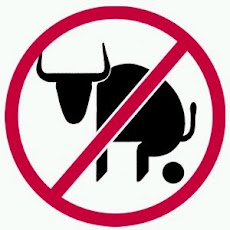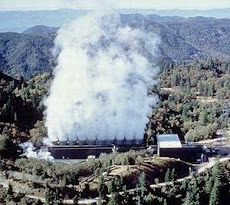From article in "Cowboy Showcase"
In the distance, you can hear the helicopters coming to the corral with another band of wild horses. Near the mouth of the capture corral Dave Cattoor stood, looking out into the vast expanse of wild horse country in Central Nevada’s, Antelope Valley. Dave was holding his “pilot horse” Shorty by his halter. When the wild horses approached the mouth of the trap, herded along from behind with the helicopters, Dave turned Shorty loose and he ran to the front of the wild horse band, leading them safely into the capture corral. Dave said in his quiet way, “I can put wild horses in your barn with Shorty’s help.”
Cattoor Livestock Roundups, Inc has repeated this scene many times in locations throughout Nevada, Wyoming, Idaho, Montana, Oregon, Utah, since 1975. This premier wild horse-gathering outfit has been in the business for over 32 years working with the BLM, USFS, NPS and private individuals and has captured over 200,000 wild horses, wild burros, and wild cattle. During this period, they have purchased and built new livestock holding equipment, improved air-to-ground radio communications, purchased three helicopters, fuel trucks, water hauling trailers, horse hauling equipment and improved gathering techniques. They have learned the best methods available to assure safety for their employees
and the animals they capture.Dave Cattoor grew up in mustang country on the Western Slope of the Colorado Rockies near Maybell, Colorado. He learned the ways of wild horses from the old-time wild horsemen in northwestern Colorado and southern Wyoming.
(Of course, he is an old "Mustanger," from an old Mustangin' famolee) He caught his first wild horse when he was 12 years old and from then on, he has followed wild horse trails throughout the west.
The Roundup
In the early days, wild horses were caught either from horseback or by water trapping. These capture methods were slow, dangerous,
(for whom?) and sometimes not very efficient
(Seems efficiency would depend upon the quality and quantity of the ranglers involved.) In the early 70s, Federal laws were changed to allow the use of helicopters to gather wild horses. This improved the gathering process a great deal and
it became much easier on the wild horses and their colts. Dave says this about helicopters and pilots, “A good helicopter pilot
does not run wild horses during a round up. These pilots must be experienced and understand livestock habits. The horses are gathered with the helicopter and herded along much as you would move cattle. The animals going to the capture trap travel at their own speed and unless they need to be turned, the helicopter backs off and just follows the animals. If the horses in the lead start to run off, they can be turned back in order to slow the herd down.
Even most of the mares with small colts can keep up using this method. Helicopter roundups are the most efficient and safe way to gather wild horses, burros, and wild cattle
.(Safe and effiecient for whom, I ask again; most certainly NOT the animals) During the past couple of years, we have started using two helicopters to gather in the same area. This has worked out very well and has cut our gather time in half and is
much easier on the wild horses and their colts.” (How so? To have TWO terrifying loud-ass flying machines in the air chasing them, instead of one. Better yet to have NONE) Dave explained how they select a capture site in a roundup area. “Preliminary scouting both by air and on the ground is done to find the natural routes wild horses travel .The capture site needs to be close to the animals you want to catch and somewhere that they would naturally go, so that you do not attempt to force horses but they will travel there
more or less on their own.
ROTFLMAO An example would be a natural spring or livestock water where horses have been going for water.
(Such as used to be used but now abandoned, as a more humane ("water-trapping") method of capture?) Easier to chase them down with helicopters, eh? Once the capture site has been chosen, proper capture pens and wings must be installed. These pens are constructed of materials that do not harm the horses
(Like the barbed wire fence that Freedom ran through?) and will make gathering, sorting, and loading easier
for the animals and wranglers alike.”
When asked about what happens when colts or horses are left behind on a gather, Dave said,
(I thought as stated above, that the mares w/ their babies have NO PROBLEM keeping up - make up our minds, will ya guys? You know we are easily confused (NOT) lol) “We have wranglers and saddled horses ready at the capture pens. When the helicopter pilot radios that a colt or horse has fallen back, we send the wrangler and his horse to bring the animals in.”
(You mean to run the exhaused animals even harder and longer, dont you,...i.e.; the colt that you ran his feet off)Once the animals are safely in the capture corrals,
(there IS NO safety in the capture pens, it is pure and utter confusion, fear and pandamonium for them ) they are sorted or sometimes loaded in semi-trucks and horse trailers and hauled to a separate set of sorting corrals at a holding facility
.(By BLMs own laws, they are not supposed to be immediately loaded for transport but are supposed to be given PLENTY OF TIME (as in a day or so) to settle down before transport.) At these corrals, Dave’s wife Sue Cattoor, and their son and business partner Troy along with several wranglers and a BLM Horse Specialist (
Bebop Cowboy Aassholes, all. Click on title above to learn more about their kind.) ) proceed with the sorting operation. When needed, a State Brand Inspector and a veterinarian assist them.
(When needed? The vet should be there ALL OF THE TIME, you know, as sort of a casual or humane observer) The horses are sorted, studs in one pen, dry mares in a pen, and mares with colts in another.
Extreme care is taken to keep the mares and their colts together. (At least til they get to the holding facilities where they are immediately taken away from their mothers)
and processed as "young adoptables." All of the horses are run through a chute and are “mouthed” to determine their ages.
Sue Cattoor said, when asked about what will be done with these captured horses, “According to the most recent estimates, the wild horse and burro population grows at a about a rate of
18 % a year. Since the enactment of the Wild and Free Roaming Horse and Burro act of 1971, horse and burro populations have
increased dramatically.
(BIG FAT LIE: there used to be nearly 1 million wild equines on our public lands, they HAVE NOT increased in numbers due to ranchers killing them off and the BLMs managment for extinction which has continously through the years DECLIMATED their numbers - BLM and their rancher friends WOULD NEVER allow the herds to grow - remember, they STILL have (secret) bounties on them. Recent estimates of wild horse and burro numbers exceed 31,000
(whos estimates? lol) living on Federal lands. (
How many privately owned cows do you run on public land, Sue? If there were 100,000 wild horses out there, it still would not be enough to do all the damage that MILLIONS of privately owned cattle do - AND at a cost of $500 MILLION DOLLARS a year to the taxpayers to run all of them privately owned cows, which, by the way, are the ones POUNDING our public lands TO DUST) Nevada has over one half of these wild horses and burros. These animals have virtually no natural predators,
(That is because the BLM kills off all the preditors at the ranchers request,.....taxpayers pay $29 MILLION a year for BLMs Preditor Control program) except for an occasional mountain lion,
(Dont worry, the Big_Game hunters taking over our lands will take care of them) and their herd size
can double about every four years. This leaves the BLM and other federal land managers in the very difficult position of managing the AMLs (appropriate management levels) for wildlife, livestock, and wild horses and burros to the best of their ability in these multiple-use areas.”
(There is NO mandaory multiple use requirements for wild horse (and burro) countrys.....BLM is IGNORING the FLPMA exceptions to the "multiple use" and "sustained yield" requirments. Remember the 1971 Act? Its designates WFH&B historic lands as PRINCIPALLY FOR THEIR USE. What part of BLACK & WHITE / CUT & DRY dont you or the BLM understand?) Problems
“If the BLM waits too long to make a gather,
wild horses can get into such bad physical shape from lack of water and feed that many may die. This is what happened to the Jackson Mountain wild horses, north of Winnemucca, Nevada, in September 2007. They were gathered too late. There had been fires and a terrible drought in this area for many months. The cattle permittee had already removed his cattle from the allotment due to lack of water and feed.
(BLM LOCKED THEM OUT of water sources - we have the pics, thank you) We gathered the wild horses and shipped them to the BLM holding facility at Palomino Valley, north of Reno. Over 100 horses died after being transported there. Salmonella was said to be the cause. However, salmonella is present in many healthy horse’s digestive tracts. When horses are in a weaken condition, as these were when we gathered, they are more susceptible to succumbing to it’s effects. Wild horses are not wildlife that will migrate to a better area when food and water run out.
(WHAT?!! Now horses are stoopid?) They are livestock
(NOT)(LIVE STOCK is something owned,...that is why they call it "STOCK," it is the owners STOCK -IN-TRADE and wild horses ARENT OWNED by any private individual so therefore are NOT livestock in the traditional sense) that must be managed and their numbers must be controlled out on the range so that they have enough to eat and drink.”
(So WHY dont you do as you say and control them ON the ranges instead herding them off? Is this what you call a managment plan?) Dave explained, “We have gathered at this same Nevada location in Antelope Valley five times in years past and this area is
overstocked with wild horses once again. The livestock permittee has been cut back to 200 cows for two months out of the year on his federal grazing permit and he owns the private water source where most of these horses are drinking.
(BLM HAS A DUTY to provide the equines with water sources, NO MATTER if privately owned) The BLM Horse Specialist will make the determination as to how many of these horses are shipped and how many will be turned back out on the range. The horses that are shipped will be hauled by semi-truck to a BLM holding facility held, and fed there. There presently are more wild horses in holding facilities than there are out on the range. These horses are on welfare.
(So are the public land ranchers, the grazing program is nothing but SOCIALISM in its purest form,..costing $500 Million a year to taxpayers) They are the wild horses and burros that no one wants.
(Guess you are speaking for the whole Nation here, huh Sue? No, not presumptious of you at all (for a Bebop Cowgirl Asshole) Over half of the BLM wild horse federal budget is going to feed these gathered unwanted horses& burros” (And whos fault is that?..Of course, you just have to know, the BLM planned it that way, just so they could use it as an excuse for mass euthansia, which by the way, as you also should know, America wil never allow. )
The Future
When we asked Sue Cattoor what the answer is to all this, she replied, “There has to be somewhere to take these excess horses that are gathered. Holding facilities are filling up. It has become very difficult to get people to adopt wild horses anymore. It would seem that the only answer to this huge problem is for various special interest groups to find additional homes for these horses and burros (
Yeah, sure, FOIST the duty of care away from the BLm and onto private hands) or allow the un-adoptable ones to be humanely destroyed like we do dogs and cats.
(Join the No-Kill Shelter Revolution Today - it is the modern trend; NoKill.Com)With the current purposed changes in the horse slaughter laws in the United States, this country is filling up with unwanted horses. (NO SUCH THING as an unwanted horse) In this November gather alone, there were at least 25 branded horses. (How hard is it to trace the brands and charge the owners with abandonment?) We could one day be gathering more privately-owned horses that have been turned out on federal lands because their owners did not want to feed and care for them than we are gathering wild horses.”
(Can you say "Against the Law?")If you want to learn something about wild horse gathering, spend a day in a mustang capture corral in the middle of wild horse country in Central Nevada with Dave and Sue Cattoor and their crew. You will get an education on what wild horse and burro capture is all about from people who spent a lifetime, watching, following, and catching these animals throughout the west
!--(and shipping them off to slaughter.)Contact information:
Cattoor Livestock Roundup, Inc.
www.wildhorseroundups.com
Dave and Sue Cattoor
Troy and Sandy Cattoor
PO Box 289
Nephi, Utah 84648
Story by Mike Laughlin - A version of this article was published in Range Magazine, Spring 2008 Issue.
Photos by Lee Raine
[ Home ] [ Cowboy Gear ] [ Cowboy Lore ] [ Horses ] [ Chuckwagon ] [ Cowboy Arts ]
[Glossary of Cowboy Terms]
Cowboy Gear Photo Gallery
Animal Photo Gallery
Horses and Riders Photo Gallery
The Land Photo Gallery
The People Photo Gallery
Rodeo Photo Gallery
Buckaroo Photo Gallery
Longhorn Cattle Photo Gallery
[Links] [Web Design] [Site Map] [About]
Cowboy Showcase e-mail
Web site design by Lee Raine
Photos by Lee Raine unless otherwise noted.
Copyright © 2000-2009 by Lee Raine. All rights reserved.
Revised: December 31, 2009
http://www.cowboyshowcase.com/roundups.htm



























